#Ken Lavine
Explore tagged Tumblr posts
Text
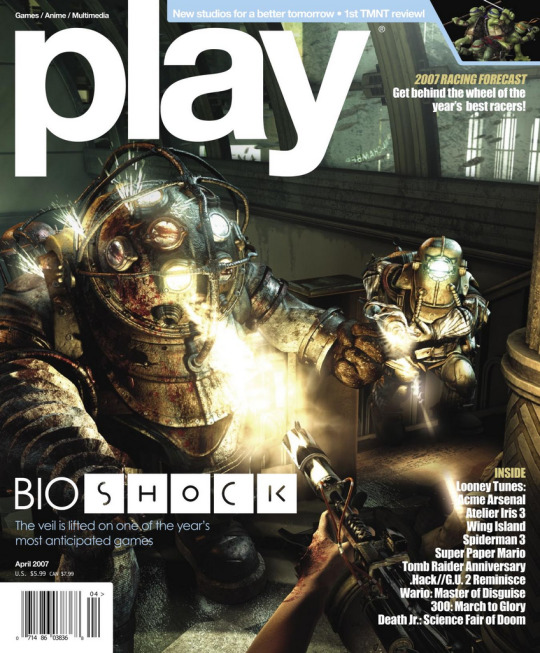
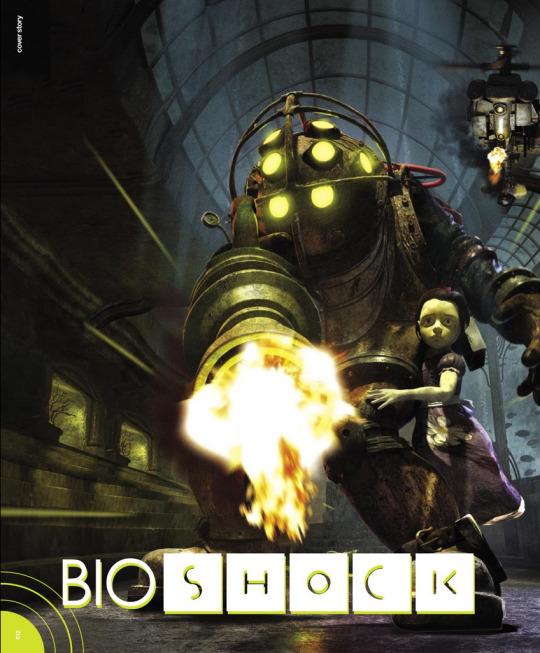

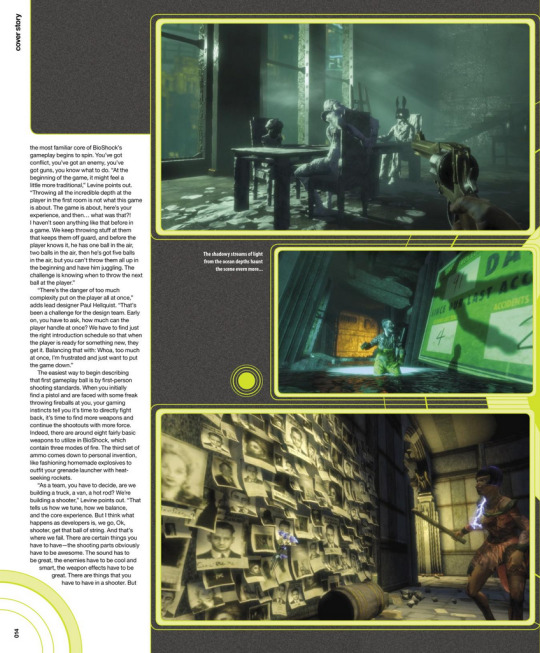


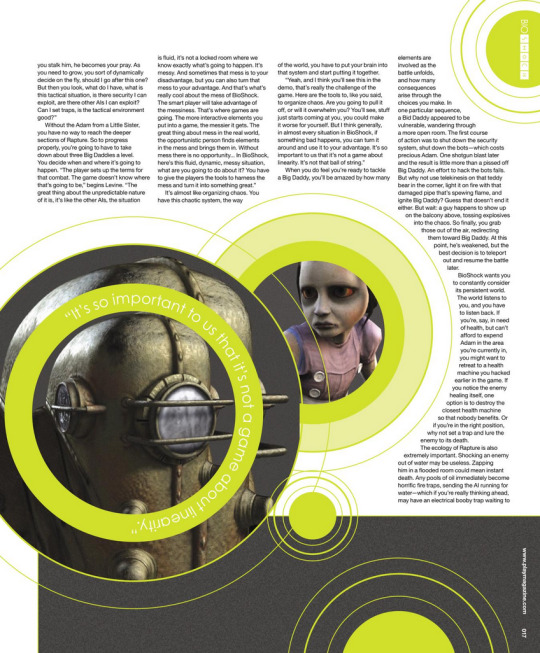


" The veil is lifted on one of the year's most anticipated games! "
Play Magazine n64 - April, 2007.
170 notes
·
View notes
Text
youtube
Judas PlayStation State of Play Jan 2024 Trailer
Ghost Story Games' Judas is a narrative first-person shooter from Ken Lavine, the creator of Bioshock.
You are aboard the Mayflower, a spacefaring city where the citizens have been trained to spy on each other and attack the slightest offense. Machines are in total control of business, government, and even art. The leaders tried to turn you into a model citizen and you sparked a revolution. Should you try to fix what you broke? Should you let it all burn down?
3 notes
·
View notes
Text
remembee when ken lavine was like stop drawing porn of Elizabeth shes like a daughter to me and everyone started drawing porn harder and with heavy breaths
6 notes
·
View notes
Text
You'd be amazed how often this works. People are doing exactly this - looking for a "sign" that they should or shouldn't do something.
There's a three-act play called "Death-Defying Acts" which features an act by Elaine May about a hooker named Dorothy (played by Linda Lavin in the original Broadway run) who calls a suicide hotline just to waste time while the hamburger she ordered arrives, after which she plans to kill herself.
She describes herself as just terminally bored, and said she would probably refrain from doing it if she could just be surprised by something. She hangs up, and Ken, the guy at the hotline engages in an insane series of deductive work to track her phone number down, and just as she finishes her hamburger, her phone rings.
"Hi, Dorothy, it's Ken...Surprise!"
So if you're thinking of doing something bad to yourself...

To any suicidal followers I may have: This is a sign to not kill yourself. You are loved and the world is special because you are in it. Keep holding on.
Reblog this when it’s on your dash. You will save someone’s life.
480K notes
·
View notes
Text
Fleischer Brothers Doc 'Cartooning America' Wins Library Of Congress Lavine/Ken Burns Prize
A new documentary on the Fleischer Brothers titled Cartooning America has won the Library Of Congress Lavine/Ken Burns Prize.
Max and Dave Fleischer are animation icons. And now, a new documentary about them, Cartooning America, is on its way to becoming an icon, as well: the movie has been named the sixth annual winner of the Library of Congress Lavine/Ken Burns Prize for Film. Director Asaf Galay will be awarded $200,000 for the multi-part film, which chronicles the lives and teachings of the Fleischers. If you’re…
0 notes
Text
Fleischer Brothers Doc 'Cartooning America' Wins Library Of Congress Lavine/Ken Burns Prize
A new documentary on the Fleischer Brothers titled Cartooning America has won the Library Of Congress Lavine/Ken Burns Prize.
Max and Dave Fleischer are animation icons. And now, a new documentary about them, Cartooning America, is on its way to becoming an icon, as well: the movie has been named the sixth annual winner of the Library of Congress Lavine/Ken Burns Prize for Film. Director Asaf Galay will be awarded $200,000 for the multi-part film, which chronicles the lives and teachings of the Fleischers. If you’re…
0 notes
Text
0 notes
Text
TV Guidance Counselor Episode 615: Mike Doughty
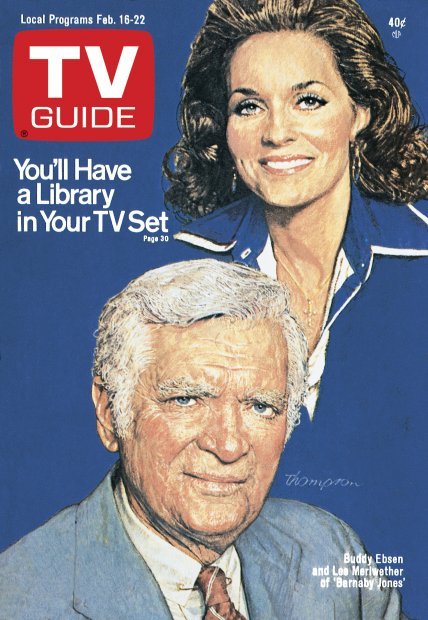
February 16-22, 1980

This week Ken welcomes musician, author and man behind the new lp "Ghosts of Vroom III", Mike Doughty.

Ken and Mike discuss how 1980 was a good poignant television year in Mike's life, being a military kid, how a year of no Mork & Mindy leads to a year of no TV at all, The American Forces Network, the outro credit song on WKRP in Cincinnati, finding out what music you like from Sitcoms, Angel Witch, the consistency of television, moving a lot, how we'd all be better off as accountants, the exciting and elusive world of commercials, Zapping your Zinger, living in Germany, specific PSAs made for AFN by the original cast of SNL, how TV reporters made the world worse by trying to sign off impressively, The Superbowl, learning about American culture via Commercials, Norman Fell, six ways to cry, dramas spun off from comedies, Lou Grant, Cop Rock, Quincy M.E., Skag with Karl Malden, Last Resort, CHiPs, dripping in Orchestral disco, how analog synth lasers make everything better, theme songs that chart, Starsky and Hutch, Mr. Smith, the prevalence of Orangutans and apes in television and movies, CB Radios, BJ and the Bear, Citizen's Band, pretending to be a doctor, how comedy never works on live music shows, how music often DOES work on comedy shows, avoiding OJ Simpson's acting work, Alice, Linda Lavin, the 70s shows that went well into the 80s, the horror of the word "booger", being Dr. Johnny Fever, Barney Miller, seeing TV sitcom actors on Broadway, coded gay characters, The White Shadow, Goldie and Liza Together, Bob Newhart's sketch comedy special, Real People, how the death of disco lead to mud wrestling and wet t-shirt contents, being confused for a real people person when you're a Real People person, when political debates became roast battles, Dragnet, The Rockford Files, young Powers Booth, old fashioned typewriters, Wonder Woman, The Incredible Hulk, The Hulk Out List, doing Bill Moyers, dueling Merv Griffins, the made for-TV movie Detour to Terror, buses, photos of Lorenzo Lamas, and recommending Blacke's Magic.

0 notes
Text
Antonio Velardo shares: When New York Was ‘Drop Dead City’ by Sam Roberts
By Sam Roberts A documentary about the city’s fiscal crisis of the 1970s, co-directed by the son of one of its saviors, wins the Library of Congress Lavine/Ken Burns Prize for Film. Published: September 11, 2023 at 12:00PM from NYT Movies https://ift.tt/85NTBMz via IFTTT

View On WordPress
0 notes
Text
New audio log?
Okay so I was playing Bioshock again for the 90th time yesterday and came across an audio diary from Suchong where he mentions Sinclair and Alexander. Is this something they added in for the remastered collection or was it always there and Bioshock 2 used those names since they'd been mentioned before? I thought I knew everything about Bioshock! Someone help!!!
#bioshock collection#bioshock#bioshock 2#yi suchong#augustus sinclair#sinclair#alexander#audio diary#audio diaries#2k#ken lavine#persephone#plasmid#plasmids#girl gamer#youtuber
29 notes
·
View notes
Text
I wanted to share this before the pride month ends! They’re not written by me, this is the original post
————————————
Robert Sean Leonard and LGBTQ+
On Stage
The Invention of Love by Tom Stoppard. Broadway, 2001.
RSL won a Tony and Outer Critics Circle Award for his portrayal of gay poet and scholar A.E. Housman, who struggles with his feelings towards his best friend and the love of his life, Moses Jackson.
The Violet Hour by Richard Greenberg. Broadway, 2004.
RSL played John Pace Seavering, an ostensibly straight character who nonetheless shares kisses with another man (played by future House guest star Scott Foley).
Fifth of July by Lanford Wilson. Broadway, 2003 (also Los Angeles).
RSL played a gay disabled Vietnam veteran, Ken Talley, living with his boyfriend in his childhood home and dealing with visiting relatives and friends over a summer weekend.
The Glass Menagerie by Tennessee Williams. Baltimore (Center Stage), 1997.
RSL played Tom, the fictional alter-ego of Williams (who was gay) in this autobiographical play about his family. Read an interview with RSL about Tennessee Williams.
The Shadow Box by Michael Cristofer. Benefit reading, 1994.
RSL played Mark, the young lover and caretaker of Brian (Christopher Reeve), a gay man dying from an unnamed disease assumed to be cancer. The performance of this 1977 Pulitzer Prize winning play was held to benefit a high school drama teacher in Tuscon, Arizona, who was fired for attempting to stage it due to its homosexual themes.
Into the Woods by James Lavine and Stephen Sondheim. Broadway workshop, 1987.
RSL played Jack (of Jack & the Beanstalk fame) in this musical about fairy tales. No expressly gay themes, but composed by openly gay LGBT icon Stephen Sondheim.
Breaking the Code by Hugh Whitemore. Broadway, 1987-1988.
A biographical play based on the life of Alan Turing (played by Sir Derek Jacobi), so-called father of the computer - a brilliant young man who, during WWII, helped to break the German submarine Enigma code. The play deals with his personality, his love of mathematics and also his homosexuality, for which he spent some time in prison. RSL played Christopher Morcom, a schoolmate who was Turing's first love and whose death, at the age of 17, was to leave a permanent mark on Turing's character. Description from this site. Read the thoughts of Andrew Hodges, on whose book the play was based.
Coming of Age in Soho by Albert Innaurato. The Public Theater, circa 1985.
The play concerns a writer named Bartholomew "Beatrice" Dante, who has fled to Soho to escape his wife of fourteen years and to come to terms with his art and his homosexuality. RSL understudied the role of Puer, an "astonishingly precocious teenager" who informs Beatrice that he is his son by a German terrorist with whom Beatrice had a brief but intense fling.
On Film
A Glimpse of Hell, directed by Mikael Salomon.
A 2001 cable movie which originally aired on FX, based on a 1989 incident that occurred aboard the USS Iowa when an explosion killed 47 sailors. RSL plays Dan Meyer, a Naval lieutenant who questions the Navy's official findings, which blamed the event on a homosexual relationship between two of the sailors.
In the Gloaming, directed by Christopher Reeve.
A 1997 cable movie which originally aired on HBO. RSL plays Danny, a young gay man dying of AIDS who returns home to be in his mother's care (played by Glenn Close). The DVD release date is unknown, but VHS copies are still available.
Books
The Short History of a Prince by Jane Hamilton, 1999.
RSL narrates this novel about the family struggles and coming of age of Walter McCloud, a gay teenager in the Midwest. The audiobook is out of print but you can still buy the novel.
Other
Auditioned for a role in "To Wong Foo Thanks for Everything, Julie Newmar"
“Douglas Carter Beane wrote the screenplay for “To Wong Foo,” and recalled all the actors’ auditions for the film. “John Cusack looked just like his sister Joan. Robert Sean Leonard was stunningly beautiful, Audrey Hepburn. James Spader—also beautiful. Willem Dafoe looked the way Mary Tyler Moore does now—the Joker’s sister, with that mouth. John Turturro—not pretty.”“
——————————
+I want to add, to my knowledge he’s listed as one of the actors funding broadway support organisation including AIDS/HIV

You can see he’s listed in this link
197 notes
·
View notes
Text

Artwork by Ken Lavin

#batman#dc comics#comic books#comic#art#superman#justice league#wonderwoman#aquaman#shazam#flash#comicbook#comicbooks
83 notes
·
View notes
Video
Cinematic Conversations- #flanneryfilm from VideoFest on Vimeo.
Cinematic Conversation between DVF Artistic Director Bart Weiss and #FlanneryFilm director Elizabeth Coffman, co-director Mark Bosco, and key collaborator, Ted Hardin on this hour-long zoom experience. Winner of the first-ever Library of Congress / Lavine/Ken Burns Prize for Film, Flannery is the lyrical, intimate exploration of the life and work of author Flannery O’Connor, whose distinctive Southern Gothic style influenced a generation of artists and activists. With her family home at Andalusia (the Georgia farm where she grew up and later wrote her best known work) as a backdrop, a picture of the woman behind her sharply aware, starkly redemptive style comes into focus. Including conversations with those who knew her and those inspired by her (Mary Karr, Tommy Lee Jones, Lucinda Williams, Hilton Als and more), Flannery employs never-before-seen archival footage, newly discovered personal letters and her own published words (read by Mary Steenburgen) alongside original animations and music to examine the life and legacy of an American literary icon
1 note
·
View note
Text
Ken Lavine's new studio Ghost Story Games revealed gameplay of their single-player narrative first-person shooter Judas
Ken Lavine’s new studio Ghost Story Games revealed gameplay of their single-player narrative first-person shooter Judas
(more…)

View On WordPress
0 notes
Text
CBS ON THE AIR: A CELEBRATION OF 50 YEARS ~ Part 1
March 26 – April 1, 1978

The origins of CBS date back to January 27, 1927, with the creation of the "United Independent Broadcasters" network. The fledgling network soon needed additional investors though, and the Columbia Phonograph Company, manufacturers of Columbia Records, rescued it in April 1927; as a result, the new network was renamed the Columbia Phonographic Broadcasting System on September 18 of that year. Columbia Phonographic went on the air on September 18, 1927, with a presentation by the Howard L. Barlow Orchestra from flagship station WOR in Newark, New Jersey, and fifteen affiliates. This was the birth of CBS radio.
CBS's involvement in television dates back to the opening of experimental station W2XAB in New York City on July 21, 1931. Its initial broadcast featured New York Mayor Jimmy Walker, Kate Smith, and George Gershwin. The station boasted the first regular seven-day broadcasting schedule in American television, broadcasting 28 hours a week.
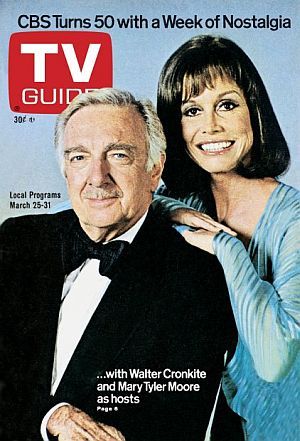
To celebrate its fiftieth year of broadcasting, CBS devoted seven nights to a celebration of their history – nine and a half hours of air time: “CBS: On The Air – A Celebration of 50 Years.” The goal was to bring together more than 100 network stars, past and present, with Walter Cronkite and Mary Tyler Moore serving as overall hosts. Other stars and personalities stepped up to host nights they were associated with. The event was produced by Alexander H. Cohen and written by his wife, Hildy Parks.
The music for the event was written by some of the greatest theatre composers of the time with the main musical theme written by Leonard Bernstein. “Member of the Family” was written by Jerry Herman. “Cowboys and Clowns” was written by Jule Styne.
The event's announcer was Dick Tufeld.
The schedule:
Sunday, March 26 - “Night of 100 Stars” - co-hosted by Telly Savalas and Jean Stapleton
Monday, March 27 - “Have a Laugh on Us” - with Lucille Ball, George Burns, Arthur Godfrey, and Bea Arthur
Tuesday, March 28 - “Chills and Thrills with a Laugh Chaser” with Alan Alda, Garry Moore, and Phil Silvers
Wednesday, March 29 - “Dreams Come True” with Dick Van Dyke, Buddy Ebsen, Cicely Tyson, and Danny Kaye
Thursday, March 30 - “Join the Family” with Richard Thomas and the cast of “The Waltons”
Friday, March 30 - “We’re Getting Personal” with Lauren Bacall, Eve Arden, Bert Convy, Richard Crenna, Bonnie Franklin, Jim Nabors, and Linda Lavin
Saturday, April 1 - “A Rootin’, Tootin’, Hootin’ & Hollerin’ Salute to Cowboys and Clowns” with Carol Burnett, Carroll O’Connor, Art Carney, Isabel Sanford, Tony Randall, and Sherman Hemsley
Although CBS attempted to bring together as many of its stars as possible, a few were just unable–or unwilling–to be involved. According to TV Guide, Cher and Amanda Blake were sick, while ABC refused to allow Cloris Leachman to participate in a special on another network. Supposedly, Charlton Heston declined to give CBS permission to use his likeness.

Lucille Ball, who helped bring the television network to prominence in the 1950s, was part of the celebrations on Sunday as one of the 100 stars, and on Monday, the night she ruled on CBS with her three sitcoms.
Like other network anniversary celebrations, “CBS: On the Air” has never been repeated nor has it been officially released on any format. However, The Paley Center for Media has more than 40 listings relating to the specials, including complete installments, clip compilations, and rough cut reels.
Although they are not near each other on stage due to the alphabetical order of entrances, this is the last time Lucille Ball and Vivian Vance would be on the same television show. Vance would make one more appearance on her own before her death in 1979.
Lucy Ricardo: “What are you? The Cuban television network?” Ricky Ricardo: “Yes. CBS. The Cuban Broadcasting System.”

Sunday, March 26 - “Night of 100 Stars”
The 115 (or so) stars were introduced to viewers by the night that they first enjoyed success, starting with Sunday. Lucille Ball enters during the second group (Monday) and is one of the first because the stars are introduced alphabetically. Vivian Vance ends the Monday night group. It takes nearly nine minutes to introduce all the “members of the CBS family.”
Here are the CBS Stars with professional connections to Lucille Ball:
Sundays
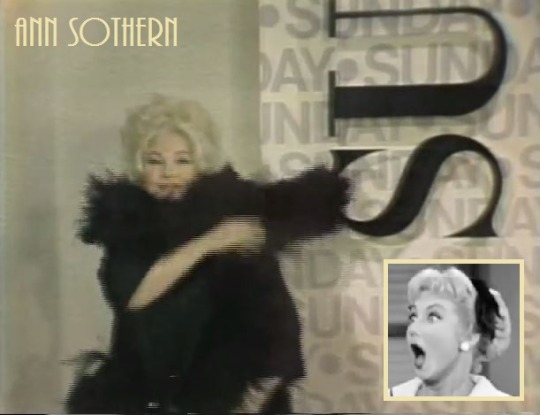
Arlene Francis (“What's My Line?”) was a panelist for Lucille Ball's six appearances on “What's My Line?” from 1954 to 1965.
Alan Funt (“Candid Camera”) guest-starred as himself (and his evil doppelganger) on “Lucy and the Candid Camera” (HL S4;E14) in 1971.
Valerie Harper (“Rhoda”) was in the chorus of Wildcat (1960) on Broadway starring Lucille Ball. Harper joined Lucy on “Dinah!” singing “Hey Look Me Over” in 1976 and sang a musical tribute to Ball at “The Kennedy Center Honors” in 1987.
Ann Sothern (“Private Secretary”) was one of Lucille Ball's closest friends from her days at RKO. Ball would always say that she would hang around the casting office asking if there were any roles Ann Sothern was too busy to do. She guest-starred as her “Private Secretary” character on the very first “Lucy-Desi Comedy Hour.” In return, Lucy appeared on her next sitcom, “The Ann Sothern Show.” Sothern played Rosie, the Countess Frambois, in several episodes of “The Lucy Show.”
Nancy Walker (“Rhoda”) did the 1943 film Best Foot Forward with Lucille Ball.
Mondays
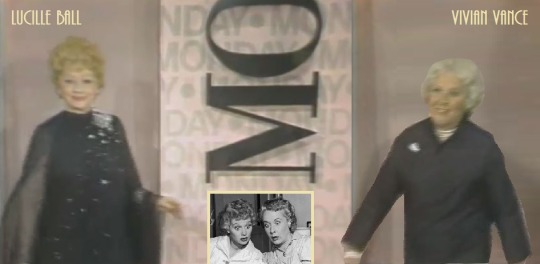
Beatrice Arthur (“Maude”) starred opposite Lucille Ball in the 1974 musical film Mame, recreating the role she created on Broadway. Like Valerie Harper, she paid tribute to Ball in song at “The Kennedy Center Honors” in 1987.
Lucille Ball (“I Love Lucy” / “The Lucy Show” / “Here's Lucy”)
Ken Berry (“Mayberry RFD”) was spotted by Lucille Ball performing on stage and put under contract to Desilu for the Desilu Workshop. He played himself on a 1968 episode of “The Lucy Show.”
George Burns (“Burns and Allen”) and Lucille Ball appeared on many TV variety and award shows together. In 1966 he played himself on “The Lucy Show” and did a cameo as himself on a 1970 episode of “Here's Lucy.”
Arthur Godfrey (“The Arthur Godfrey Show”) also hosted “Talent Scouts” on which Lucile Ball did a guest appearance in 1963. After a career lull, Ball guest starred him on “The Lucy Show” as himself in March 1965.
Andy Griffith (“The Andy Griffith Show”) filmed his show on the Desilu backlot. Lucy interviewed Griffith on her radio show in 1965. In 1968, the two did a pantomime sketch on “The Tennessee Ernie Ford Special.” He finally teamed with Ball on “Here's Lucy” in 1973.
Don Knotts (“The Andy Griffith Show”) played Lucy Carter's “last blind date” on a 1973 episode of “Here's Lucy.”
Art Linkletter (“The Art Linkletter Show”) was first mentioned on “The Lucy Show” in 1962 and would appear as himself four years later. Lucille Ball was his guest on “House Party” in 1964. Linkletter will also play himself on a 1970 episode of “Here’s Lucy.”
Danny Thomas (“Make Room for Daddy”) and Lucille Ball's careers are forever linked. “Make Room for Daddy” was filmed at Desilu Studios and when it moved to CBS the characters did a cross-over episode of “The Lucy-Desi Comedy Hour,” exchanging homes with the Ricardos. In return, Lucy and Desi played Lucy and Ricky on an episode of “Make Room for Daddy.” When Thomas starred in a sequel titled “Make Room for Granddaddy” Ball guest-starred and did the same when he starred in the short-lived series “The Practice.” Thomas appeared as himself in a 1965 episode of “The Lucy Show” and as an eccentric artist on “Here's Lucy” in 1973.
Vivian Vance (“I Love Lucy” / “The Lucy Show” / “Here's Lucy”) is best remembered as Lucy's best pal Ethel Mertz on “I Love Lucy.” She returned to play Vivian Bagley on “The Lucy Show” and Vivian Jones on “Here's Lucy.” The pair also were seen together on CBS in “Lucy Calls The President” in 1977.
Tuesdays
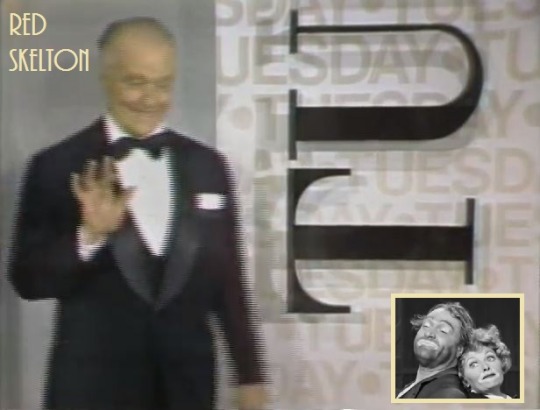
Jamie Farr (“M*A*S*H”) was seen on “Lucy, The Rain Goddess” (TLS S4;E15) in 1966.
Garry Moore (“The Garry Moore Show”) was also the host of “I've Got A Secret” on which Lucille Ball appeared in 1956 and 1961. In between, she was a guest on “The Garry Moore Show” in 1960.
Phil Silvers (“The Phil Silvers Show”) played an efficiency expert on a 1966 episode of “The Lucy Show.” Lucy made a cameo appearance on “The Phil Silvers Show” in 1959.
Red Skelton (“The Red Skelton Hour”) did five films with Lucille Ball between 1938 and 1945, including DuBarry Was a Lady (1943). Skelton played himself on “Lucy Goes to Alaska” in 1959.
Wednesdays

Steve Allen (“The Steve Allen Show”) was the guest-host or panelist for three of Lucy's appearances on “What's My Line?” and “I've Got a Secret.” He played himself on “Lucy Calls the President” (1977).
Eva Gabor (“Green Acres”) made two appearances on “Here's Lucy,” once playing herself.
Danny Kaye (“The Danny Kaye Show”) appeared as himself on a 1964 episode of “The Lucy Show.” Before that, Ball guest-starred on two “Danny Kaye Specials.”
Dick Van Dyke (“The Dick Van Dyke Show”) invited Lucille Ball to appear on his short-lived variety show “Van Dyke & Company” in 1976.
Thursdays

Ellen Corby (“The Waltons”) played Miss Hannah, Lucy Ricardo's high school drama teacher in “Lucy Meets Orson Welles” (ILL S6;E3) in 1956. She also appeared in a 1963 episode of “The Lucy Show.”
Fridays

Eve Arden (“Our Miss Brooks”) did a one line cameo as herself in “Hollywood at Last!” (ILL S4;E16) in 1955. Arden and Ball did two films together at RKO in the late 1930s.
Richard Crenna (“Our Miss Brooks”) played Arthur Morton, a variation on his character Walter Denton in “Our Miss Brooks,” on “The Young Fans” (ILL S1;E20) in 1952.
Jim Nabors (“Gomer Pyle USMC”) did an uncredited cameo as Gomer Pyle in “Lucy Gets Caught Up in the Draft” (TLS S5;E9) in 1966. Both shows were shot at Desilu Studios.
Saturdays
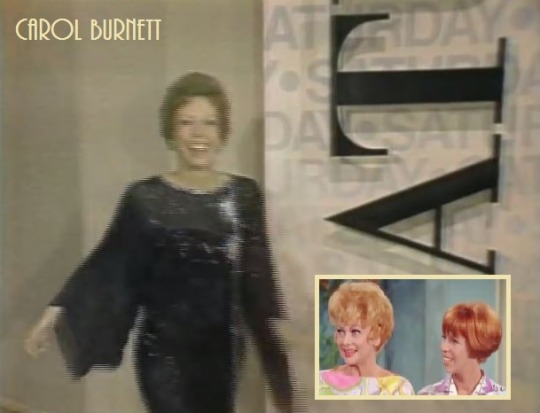
Carol Burnett (“The Carol Burnett Show”) was a protege of Lucille Ball's. In 1966 Lucille Ball and Zero Mostel were the stars of “Carol + 2”. Ball and Burnett would exchange appearances on each other's shows. Carol made seven appearances on “The Lucy Show” and “Here's Lucy,” while Ball did four installments of “The Carol Burnett Show.”
Art Carney (“The Honeymooners”) played Lucille Ball’s husband in the 1967 film A Guide for the Married Man. He also starred in Lucille Ball’s 1976 TV special, What Now, Catherine Curtis? As well as her first special, Happy Anniversary and Goodbye in 1974.
Mike Connors (“Mannix”) played his iconic detective Joe Mannix on an episode of “Here's Lucy” in 1971. Lucille Ball was responsible for rescuing “Mannix” from being canceled early in its run.
Fred MacMurray (“My Three Sons”) played himself in “Lucy Hunts Uranium” in 1958.
Audrey Meadows (“The Honeymooners”) played Lucy's sister on one episode of “Life With Lucy” (1986).
Tony Randall (“The Odd Couple”) played a mountain climbing executive on a 1971 “Here's Lucy.”
Betty White (“The Mary Tyler Moore Show”) was a life-long friend of Lucille Ball's. The two made no dramatic appearances together, but did co-star on episodes of “Password.”

On Saturday, April 1, the special ended with these same celebrities lined up on a elevated walkway outside CBS Television City. Lucille Ball appears behind the screen credit for director Clark Jones.

Next! “Have a Laugh on Us!” ~ Part 2
#CBS#Lucille Ball#Vivian Vance#Lucy#CBS On The Air#50 Years#1978#TV#Arlene Francis#Alan Funt#Valerie Harper#Ann Sothern#Nancy Walker#Beatrice Arthur#Ken Berry#George Burns#Arthur Godfrey#Andy Griffith#Don Knotts#Art Linkletter#Danny Thomas#Jamie Farr#Garry Moore#Phil Silvers#Red Skelton#Steve Allen#Eva Gabor#Danny Kaye#Dick Van Dyke#Ellen Corby
5 notes
·
View notes
Link
0 notes